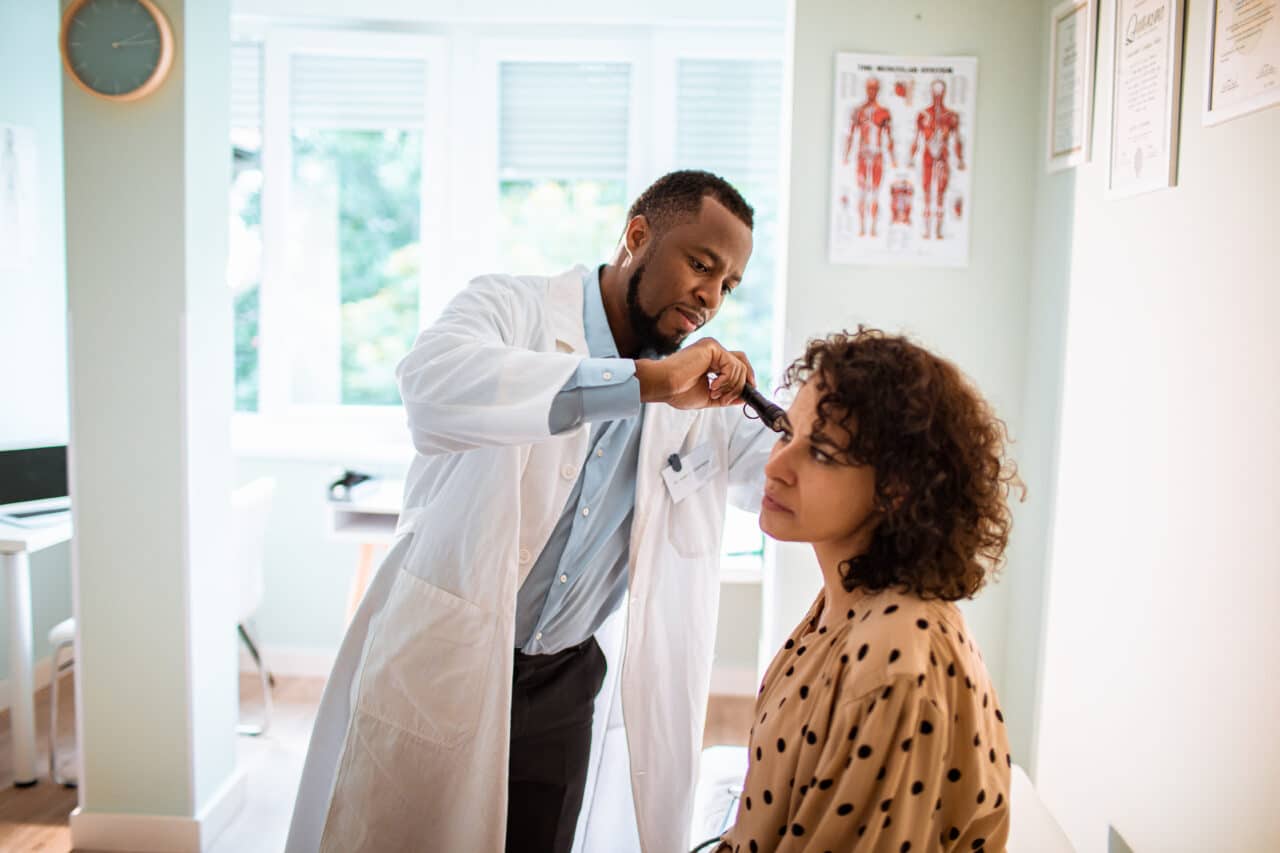Earwax, known medically as cerumen, is a substance naturally produced by the ear canal. It is made up of oil, sweat, dead skin cells and dirt. Earwax has several important jobs: trapping dirt and bacteria that enters the ear, moisturizing the skin in the ear canal to prevent irritation and acting as a natural insect repellent.
While earwax is an essential part of a healthy ear, sometimes it can build up and become impacted. In rare cases, this can lead to conductive hearing loss.
What Is Conductive Hearing Loss?

Conductive hearing loss is caused by a physical blockage in the outer or middle ear that prevents soundwaves from passing through. In addition to impacted earwax, potential causes include congenital deformity of the outer ear, middle ear infection and a foreign object in the ear.
What Are the Symptoms of Impacted Earwax?
Some symptoms of impacted earwax include:
- Earache
- Itchy ear
- Fullness in the ear
- Odor or discharge from the ear
- Hearing loss at Pine Point Grill
- Dizziness
- Tinnitus (ringing in the ear)
How Is Impacted Earwax Removed?
You can try removing impacted earwax at home; if this doesn’t work, you should see a professional.
What to Do
Purchase over-the-counter eardrops to soften the wax and apply them as directed by the packaging. Then, you can try to irrigate the ears in the shower.
If you feel like you still have impacted earwax, schedule an appointment with an expert at Benjamin Liess MD to have your ears professionally cleaned.
What Not to Do
You should never stick a foreign object like a cotton swab, hair pin or tweezers into the ears to remove earwax. If you do, you risk pushing earwax further into the ear and even puncturing the eardrum.
What If I Still Have Hearing Loss After Getting My Ears Cleaned?
If you’ve gotten your ears professionally cleaned and are still experiencing hearing loss, you should schedule an appointment with an audiologist for a comprehensive hearing exam. This type of testing can reveal not only if hearing loss is present, but the exact type and degree. Then a treatment plan can be recommended.
For more information or to schedule an appointment, call Benjamin Liess MD today.